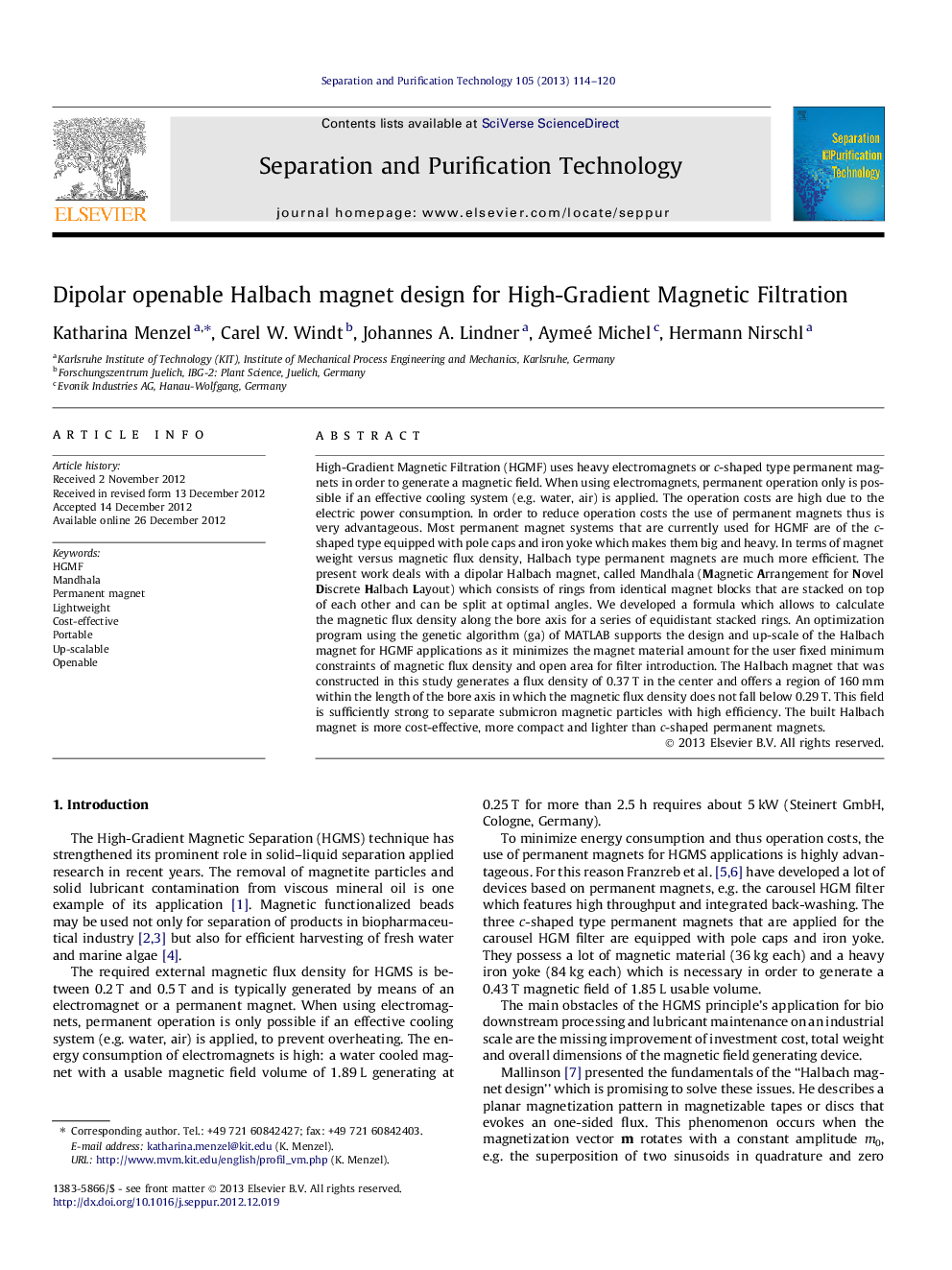| Article ID | Journal | Published Year | Pages | File Type |
|---|---|---|---|---|
| 641727 | Separation and Purification Technology | 2013 | 7 Pages |
High-Gradient Magnetic Filtration (HGMF) uses heavy electromagnets or c-shaped type permanent magnets in order to generate a magnetic field. When using electromagnets, permanent operation only is possible if an effective cooling system (e.g. water, air) is applied. The operation costs are high due to the electric power consumption. In order to reduce operation costs the use of permanent magnets thus is very advantageous. Most permanent magnet systems that are currently used for HGMF are of the c-shaped type equipped with pole caps and iron yoke which makes them big and heavy. In terms of magnet weight versus magnetic flux density, Halbach type permanent magnets are much more efficient. The present work deals with a dipolar Halbach magnet, called Mandhala (Magnetic Arrangement for Novel Discrete Halbach Layout) which consists of rings from identical magnet blocks that are stacked on top of each other and can be split at optimal angles. We developed a formula which allows to calculate the magnetic flux density along the bore axis for a series of equidistant stacked rings. An optimization program using the genetic algorithm (ga) of MATLAB supports the design and up-scale of the Halbach magnet for HGMF applications as it minimizes the magnet material amount for the user fixed minimum constraints of magnetic flux density and open area for filter introduction. The Halbach magnet that was constructed in this study generates a flux density of 0.37 T in the center and offers a region of 160 mm within the length of the bore axis in which the magnetic flux density does not fall below 0.29 T. This field is sufficiently strong to separate submicron magnetic particles with high efficiency. The built Halbach magnet is more cost-effective, more compact and lighter than c-shaped permanent magnets.
► Hinged, openable lightweight dipolar Halbach magnet promoting the application of Magnetic Separation in industrial scale. ► Design and building of an Halbach array for a usable volume of 1.5 L that generates 0.37 T in the center and the field does not fall below 0.2 T within 200 mm length. ► Optimization procedure for HGMF up-scaling.
